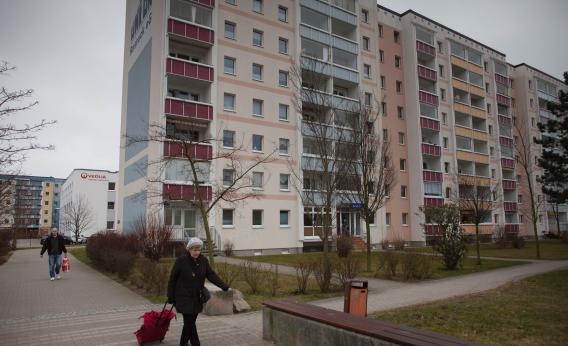A few years back we invented a marvelous series of new technologies around mortgage securitization that made it possible for people who used to be poor home-loan prospects to acquire mortgages. Thus the homeownership rate rose. With it came a structural shift in the building stock. You can own in a multi-family structure (I do) and you can rent in a single-family structure (I’ve done it) but typically we build single-family homes for sale and multi-family structures for rental. Thanks to this technological breakthrough we started building fewer multi-family homes (and fewer “manufactured” homes) and more traditional single family homes. Then it turned out that the technology was badly flawed, and based on a covert assumption that a sustained nationwide house price decline was impossible. It wasn’t impossible and we regressed. Suddenly we had a net flow of people “losing their homes” creating many families with no house to live in (so they move in with a sibling or a parent) and many houses with nobody to live in them (a “shadow inventory” of foreclosures) which, when you think about it, is a nonsensical situation for a society to be in.
But now (via Karl Smith) comes a new technology, bulk purchases of vacant homes for rental purposes:
One of the most bullish investors is Carrington Capital Management, which has teamed up with Los Angeles-based OakTree Capital. They have created a $450 million fund to buy foreclosed homes in bulk and rent them out.
In a marketing document for one of its funds, Carrington claims that without using leverage or borrowed money it can generate an annual yield of 7 percent from rental income alone. Its long-term strategy is to package the fund into a publicly traded real estate investment trust. If that strategy is successful, Carrington projects investors can see an internal rate of return of 25 percent over three years.
A 7 percent yield in a climate where a 30-year treasury bond gets you a 3.46 yield is great. This implies that if you have good credit and can gain access to a low-rate traditional mortgage you should look very hard at it. And it implies that if you’re well-capitalized, you should look very seriously at building some houses. If you’re a municipality, you should look very seriously at your zoning code to see if there’s something you can do to turn yourself into an attractive destination for this kind of homebuilding. There are sound reasons of logistics why rental housing and multi-family structures tend to go together.
